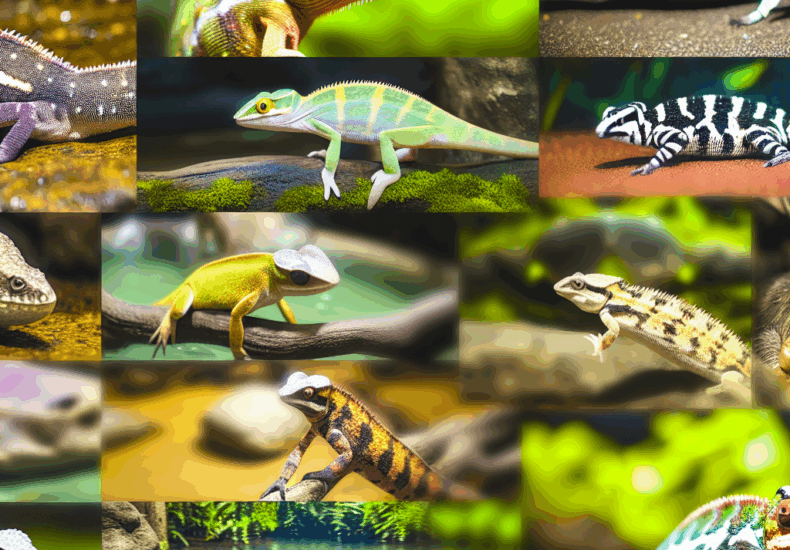
Discover Florida’s Fascinating Wildlife Secrets
20 Fun Facts About Florida’s Wildlife You Didn’t Know
Florida is known for its diverse and unique wildlife, with a wide range of species that call the state home. From the Everglades to the Gulf Coast, Florida’s wildlife is both fascinating and sometimes surprising. In this article, we will explore 20 fun facts about Florida’s wildlife that you may not have known.
The American Alligator: Florida’s Iconic Reptile
The American alligator is a common sight in Florida, but did you know that these reptiles have been around for millions of years? They are considered living fossils, with ancestors dating back to the time of the dinosaurs. In addition, alligators play a crucial role in maintaining the balance of Florida’s wetland ecosystems, serving as top predators and controlling populations of other species.
Alligators and Crocodiles: Spot the Differences
- Alligators have a wider snout, while crocodiles have a more pointed one.
- Alligator habitats are primarily freshwater, while crocodiles can inhabit both saltwater and freshwater environments.
- Alligator scales are thicker and have a rough texture, whereas crocodile scales are smoother and lighter in color.
The Manatee: Florida’s Gentle Giant
The West Indian manatee, commonly known as the Florida manatee, is a beloved resident of Florida’s waterways. These gentle giants are often seen in the state’s springs and coastal areas, where they graze on aquatic plants. Despite their size, manatees are herbivores and have no natural predators in the wild. However, they are vulnerable to boat strikes and habitat loss, making conservation efforts crucial for their survival.
Interesting Manatee Facts
- Manatees can hold their breath for up to 20 minutes.
- They communicate with each other through a series of vocalizations.
- Manatees are known to form close bonds with their young, staying together for up to two years after birth.
The Florida Panther: A Rare and Endangered Species
The Florida panther is a subspecies of cougar that is unique to the state of Florida. These large cats once roamed throughout the southeastern United States, but habitat loss and hunting reduced their numbers drastically. Today, the Florida panther is one of the most endangered mammals in the country, with only around 120 individuals left in the wild. Conservation efforts are underway to protect this iconic species and ensure its survival for future generations.
Florida Panther Conservation
- Protected areas like the Florida Panther National Wildlife Refuge provide safe habitats for these animals.
- Genetic diversity is a major concern for the survival of the Florida panther, prompting efforts to introduce new individuals from Texas to increase gene flow.
- Florida panthers are primarily solitary animals, with males having larger home ranges that overlap with several females.
The Roseate Spoonbill: Florida’s Pink Wonder
The roseate spoonbill is a striking bird with a pink plumage and distinctive spoon-shaped bill. These elegant waders can be found in Florida’s coastal marshes, where they feed on small fish, crustaceans, and insects. Despite their vibrant appearance, roseate spoonbills were once hunted to near extinction for their feathers, which were used in the hat-making industry. Today, conservation measures have helped their populations rebound, making them a welcome sight for birdwatchers in Florida.
Fun Facts About Roseate Spoonbills
- Young spoonbills are born with white plumage, which gradually turns pink as they age.
- They are known for their unique feeding behavior, which involves swinging their bills back and forth in the water to catch prey.
- Roseate spoonbills nest in large colonies, with several pairs building their nests in the same tree.
Florida’s Wildlife: A Treasure Worth Protecting
Florida’s wildlife is not only fascinating but also integral to the state’s identity and ecosystem health. From the mangrove forests of the Keys to the pine flatwoods of the panhandle, each region of Florida is home to a diverse array of plant and animal species. By learning more about Florida’s wildlife and supporting conservation efforts, we can ensure that future generations will also have the opportunity to experience the wonder and beauty of the Sunshine State’s natural world.
You may also like
Calendar
| M | T | W | T | F | S | S |
|---|---|---|---|---|---|---|
| 1 | 2 | 3 | 4 | 5 | 6 | 7 |
| 8 | 9 | 10 | 11 | 12 | 13 | 14 |
| 15 | 16 | 17 | 18 | 19 | 20 | 21 |
| 22 | 23 | 24 | 25 | 26 | 27 | 28 |
| 29 | 30 | 31 | ||||